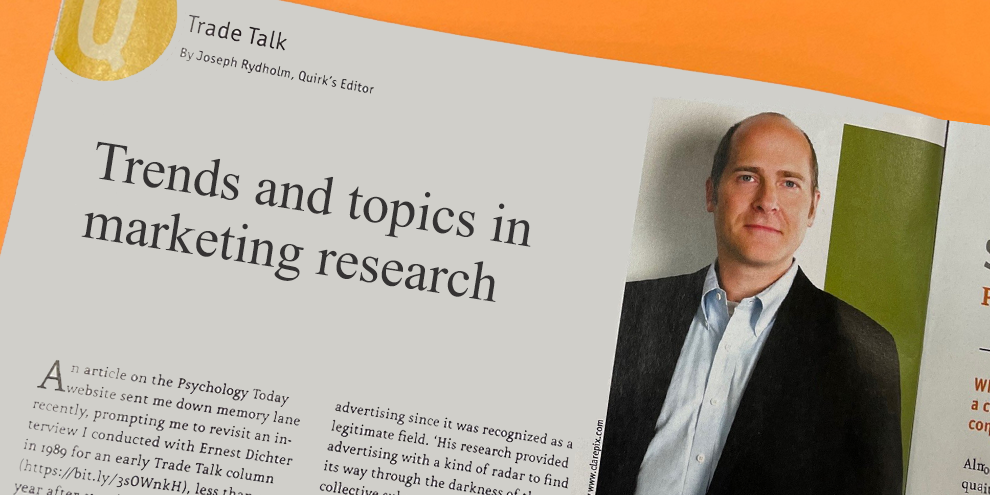This past summer, as part of our annual survey of corporate researchers for our Corporate Research Report (CRR), one of the open-ended questions asked insights pros to tell us which tools or techniques have had the biggest impact on their deliverables in the past year. (The report was included with this year’s Researcher SourceBook, which mailed in September, and if you didn’t get a copy, e-mail me a note and I’ll be happy to send you a PDF.)
Going in, you might expect the comments to center around some of the newest or most talked-about methods, with respondents excited to share tales of their recent wins. There certainly was some of that:
“The incorporation of brain science techniques into some of our studies has given us another way to capture insights and get to the emotional response.”
“Social listening and text analytics are new for us and have driven some action.”
“Biometrics, because it provides specific feedback on what respondents are actually doing vs. what they think they’re doing.”
“Predictive analytics has allowed us to streamline data into manageable/actionable bursts of activity.”
“Text analytics has allowed us to get more use out of all of our survey verbatims at a macro level. Before, they were only used at the micro level where teams could read their individual comments.”
“Having online respondents use hot-spot or heat-mapping tools has helped improve the usefulness of our technical literature.”
But there were also several mentions of tried-and-true approaches as well:
“Traditional research continues to give us the most actionable insights!”
“It’s not really a tool or technique but we are getting much better at tying all our data together into the big picture.”
“We’ve increased our use of multi-mode research, coupling qual (often telephone IDIs) with quant survey research. We’re finding this more influential with decision makers, giving them the ‘what’ and ‘how many’ together with the ‘why’ and ‘what else’ that qual provides.”
“Telephone interviewing. Thirty percent of our customers do not have Internet access.”
“Conjoint analysis has been exceptionally helpful because it provides some implicit information, in addition to the answers the respondents are providing directly. It helps us get an idea of where to start when considering entering new markets.”
“Secondary research. [It gives us the ability] to collect information that other groups have compiled, thus reducing cost and time of getting information.”
Also in evidence are researchers’ creativity and resourcefulness, seeing a problem that requires solving or meeting a need that isn’t being met at present:
“We set up an online community/panel for a hard-to-identify group of customers and potential customers. This allowed us to survey them quickly and frequently during a key part of our agile product development process.”
“We developed a cross-functional in-person ethnography team that has created a new capability within our MR dept.”
“We built our own research panel – really saving us a lot of $; can do more for less, quicker.”
“Without a doubt, it’s the use of creative design firms to convert dry research data into visually engaging content that can be understood and communicated both internally and externally.”
Mix of old and new
In the end, a mix of old and new, implemented with prudence and care, seems like an effective way to go for this and other CRR survey respondents:
“It’s not about fancy technologies or techniques. It’s about being smart in developing the research and skillfully analyzing the results. This new stuff like gamification, mobile surveys, facial recognition, etc., is way overblown. They’re just different ways to do things. I’m more interested in the thinking that goes into the studies and the valuable and insightful results.”
